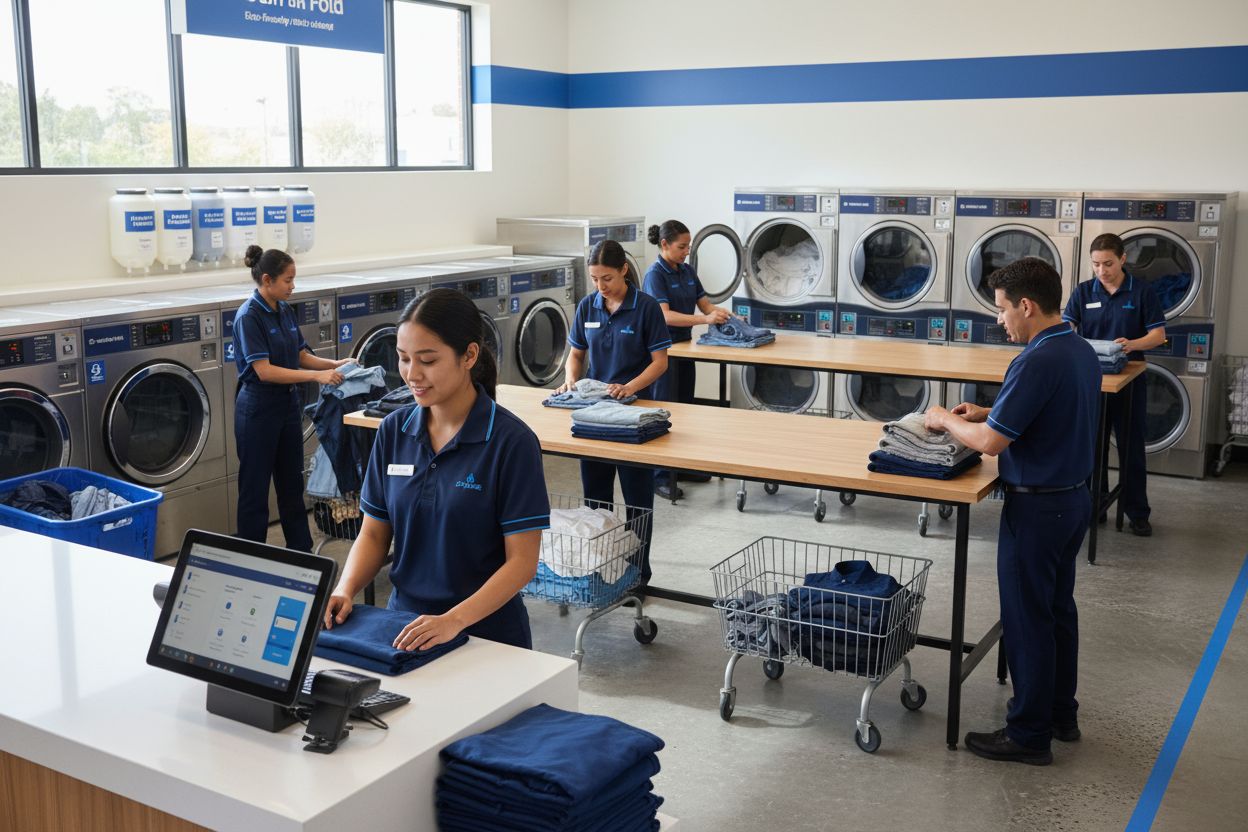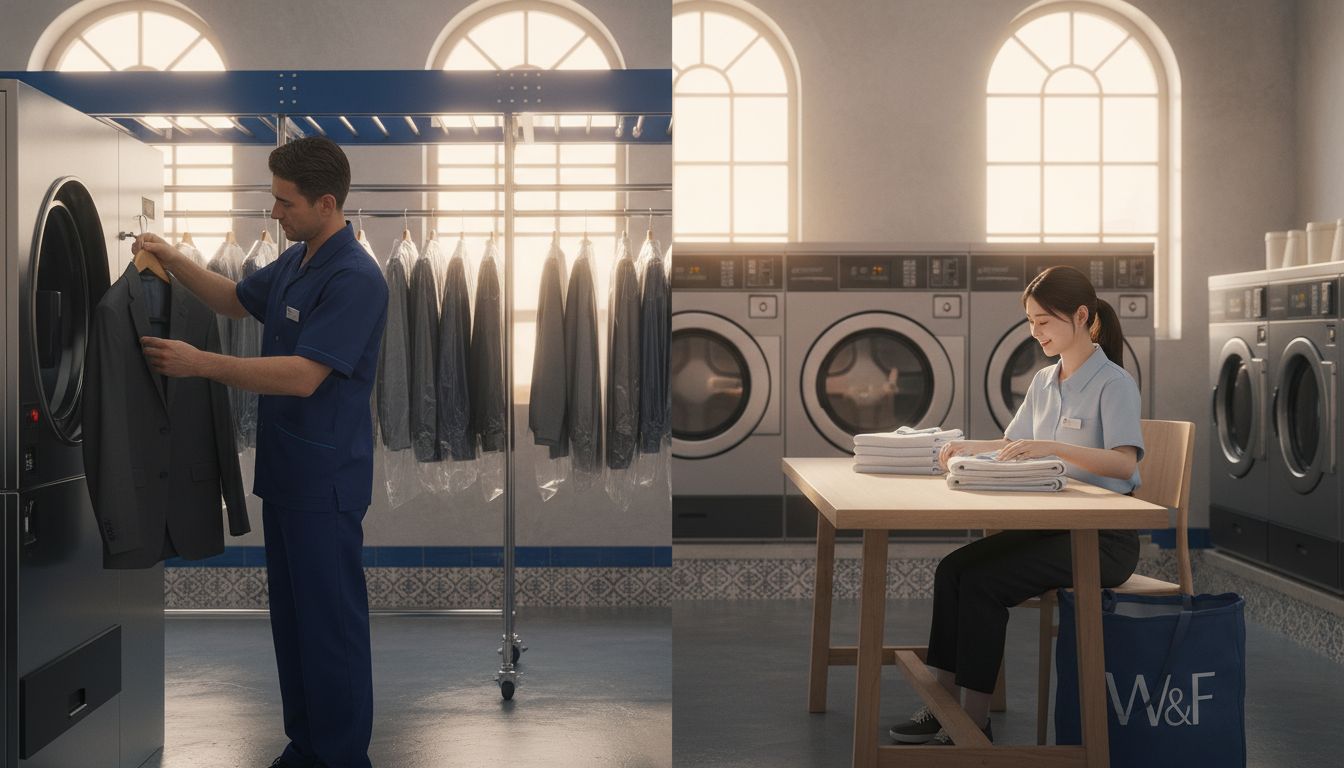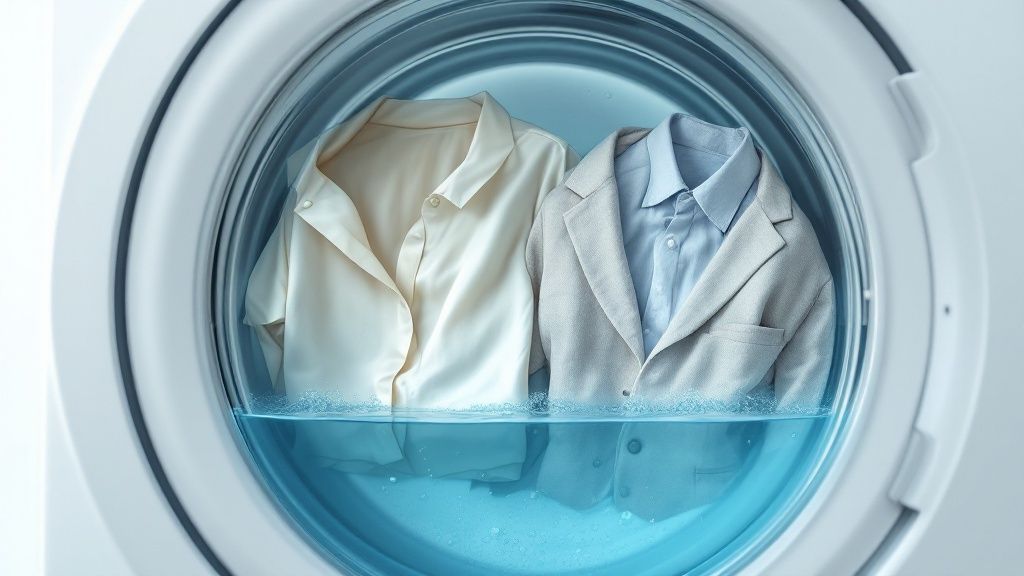Master the Professional Dry Cleaning Process Today
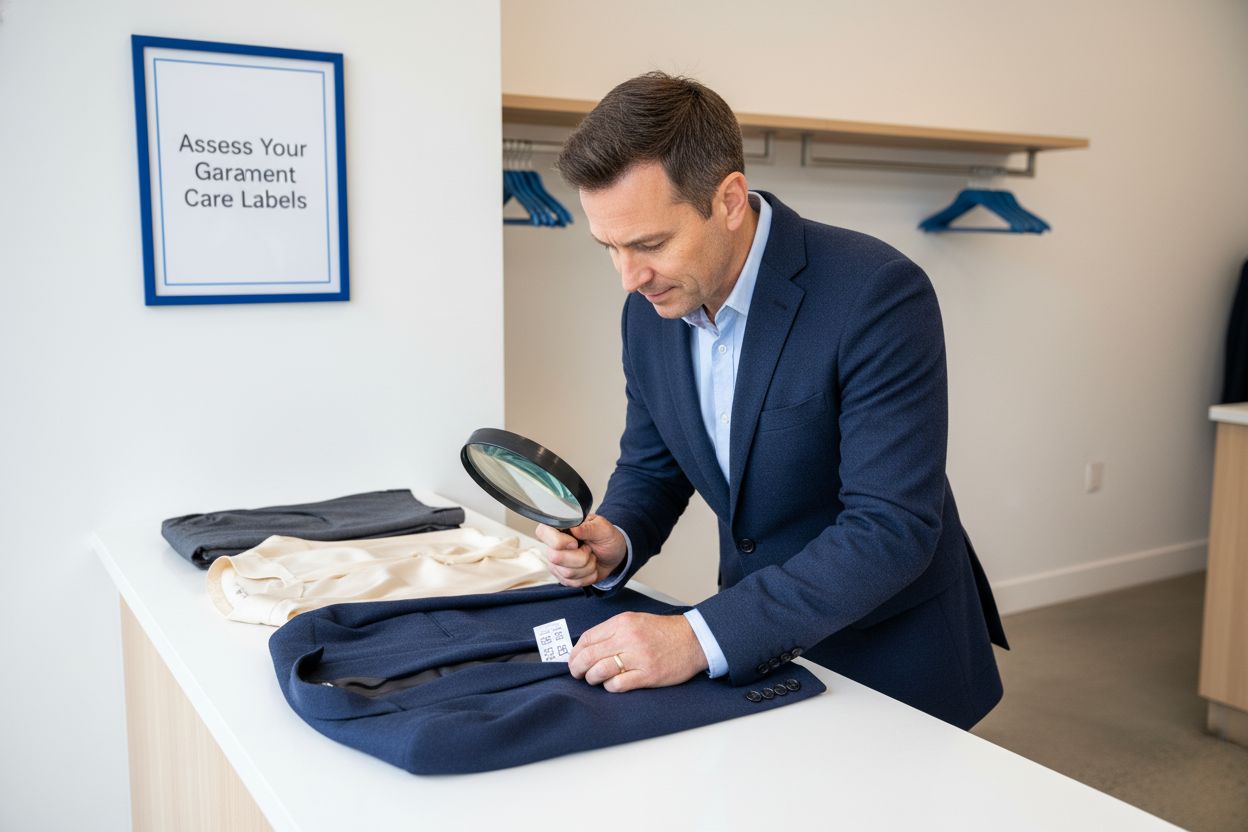
Dry cleaning seems simple enough. Drop off your clothes and pick them up looking brand new, right? Guess again. Over 60 percent of damaged garments brought to dry cleaners are due to misreading care labels or skipping a crucial step. Most people miss the one detail that decides whether your favorite suit gets restored or ruined. The real difference comes down to how closely you follow the professional process from the very first step.
Quick Summary
Step 1: Assess Your Garment Care Labels
The first crucial step in the professional dry cleaning process begins right in your closet with understanding the mysterious language of fabric care labels. These small tags are your garments’ instruction manuals, providing critical guidance for cleaning and preservation. Most people glance over these tiny symbols, but they actually contain precise information about fabric type, recommended cleaning methods, and potential risks.
Start by carefully examining each garment’s label, typically located inside the side seam or back collar area. You’ll encounter a series of symbols that communicate specific cleaning instructions. The primary symbols you’ll want to recognize include a circle (professional cleaning), a triangle (bleaching instructions), and a square (drying recommendations). A circle with a P inside indicates professional dry cleaning is recommended, while a circle with an X through it signals that professional dry cleaning should be avoided.
Our guide on understanding fabric wear and tear can help you dive deeper into decoding these intricate symbols. Professional dry cleaners like Columbia Pike Laundry are trained to interpret these labels with precision, ensuring your garments receive optimal care.
Special attention is required for delicate fabrics like silk, wool, and certain synthetic blends. These materials often demand specialized cleaning techniques that go beyond standard washing methods. A circle with a P doesn’t just mean dry cleaning it means your item requires professional expertise to maintain its original texture, color, and shape.
Before submitting garments for professional cleaning, perform a quick visual inspection. Check for loose threads, missing buttons, or existing stains that might need pre-treatment. This preliminary assessment helps your dry cleaner understand the specific care requirements and potential challenges with each piece of clothing.
Remember, not all labels are created equal. Vintage or imported garments might have labels with unfamiliar symbols or multiple cleaning recommendations. When in doubt, consult a professional dry cleaner who can provide expert guidance and prevent potential fabric damage.
By mastering the art of reading care labels, you’re not just preparing for cleaning you’re protecting your investment in quality clothing and ensuring each garment receives the precise treatment it deserves.
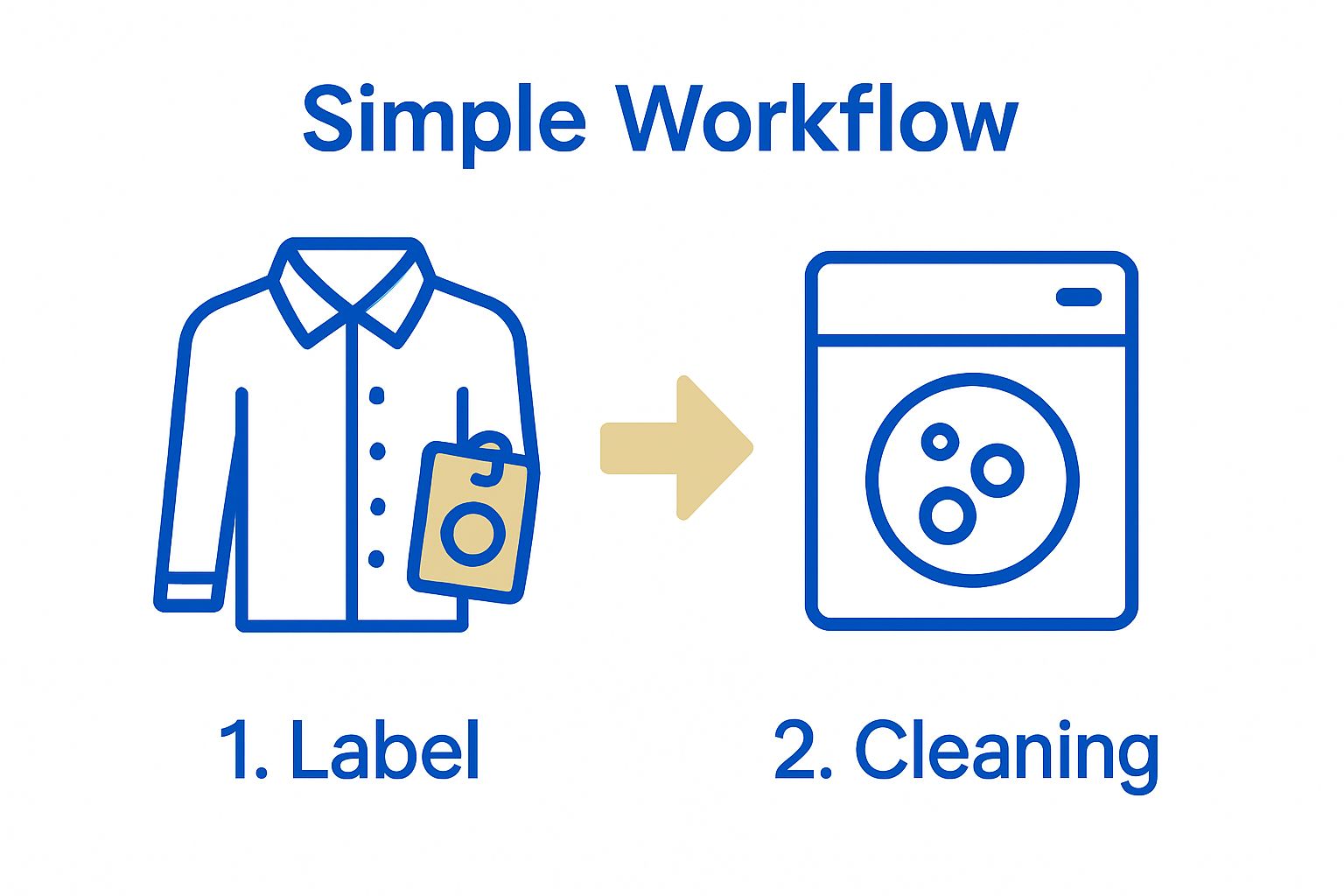
Step 2: Select the Appropriate Dry Cleaning Services
Navigating the world of professional dry cleaning services requires more than simply dropping off your clothes. Selecting the right service is about matching your garment’s specific needs with specialized cleaning techniques. Not all dry cleaning services are created equal, and understanding the nuanced differences can protect your most cherished clothing items.
Learn how dry cleaning works behind the scenes to appreciate the complexity of professional fabric care. Different fabrics demand unique treatment approaches, from delicate silk evening gowns to robust business suits. Professional dry cleaners like Columbia Pike Laundry offer specialized services that go beyond standard cleaning methods.
When selecting a dry cleaning service, consider several critical factors. Examine the cleaner’s expertise with specific fabric types, their stain removal capabilities, and additional services like alterations or repairs. A high-quality dry cleaner will ask detailed questions about your garments, understanding their history, previous treatments, and potential vulnerabilities.
Pay close attention to the cleaning technologies and solvents used. Modern dry cleaning has evolved significantly, with environmentally friendly and fabric-preserving techniques replacing traditional chemical-heavy processes. Look for services that use green cleaning technologies and demonstrate a commitment to fabric preservation. This approach not only protects your clothing but also minimizes environmental impact.
Specialized services become crucial for unique items like wedding gowns, vintage clothing, or designer pieces. These garments often require custom cleaning protocols that standard services cannot provide. Professional dry cleaners with extensive experience can offer tailored solutions that maintain the integrity of complex or delicate fabrics.
Additional considerations include turnaround time, pricing structure, and convenience factors like pickup and delivery options. Some dry cleaners offer digital tracking, allowing you to monitor your garments throughout the cleaning process. Columbia Pike Laundry, for instance, provides seamless online platforms that make scheduling and tracking your dry cleaning simple and transparent.
Before committing to a service, request a consultation or detailed explanation of their cleaning process. Reputable dry cleaners will be transparent about their methods, willing to answer questions and provide detailed care instructions. By taking time to select the right professional dry cleaning service, you invest in the longevity and appearance of your wardrobe.
Step 3: Prepare Your Items for Dry Cleaning
Preparing your garments for professional dry cleaning is a critical step that can significantly impact the quality of cleaning and preservation of your clothing. Proper preparation transforms a routine cleaning into a meticulous fabric restoration process. This stage involves more than simply gathering your clothes it requires a strategic approach to ensure each item receives optimal care.
Check out our guide for cleaning white dress shirts to understand the nuanced preparation techniques for specific garment types. Begin by conducting a comprehensive inspection of each item. Empty all pockets completely, removing items like receipts, coins, or forgotten notes. These small objects can damage both the garment and the cleaning equipment if left inside.
Carefully examine each piece for existing damage, loose threads, missing buttons, or vulnerable areas. Pointing out these details to your dry cleaner allows them to take extra precautions or recommend repairs before cleaning. Delicate embellishments like sequins, beading, or intricate decorative elements require special attention. If possible, turn these garments inside out or use protective garment bags to prevent additional wear during the cleaning process.
Scientific research from textile preservation experts suggests that pre-treating visible stains before professional cleaning can dramatically improve stain removal outcomes. Take time to identify and mark specific stain locations. Use safety pins or small fabric tags to highlight areas that need special treatment. Share detailed information about the stain’s origin with your dry cleaner, as different substances require unique removal techniques.
Group your garments strategically based on color, fabric type, and cleaning requirements. Separate whites, darks, and delicate items to prevent potential color transfer or fabric damage. Professional dry cleaners appreciate clients who take the time to organize their items, as it demonstrates an understanding of fabric care and helps streamline the cleaning process.
Consider the timing and frequency of cleaning. Some garments, particularly those made from delicate fabrics or with complex structures, should not be dry cleaned too frequently. Assess whether the item truly requires professional cleaning or if spot cleaning and airing might suffice. By being selective and strategic, you extend the life of your clothing and maintain its original quality.
To help you prepare your garments efficiently, here is a checklist of key steps to follow before taking your clothing to the dry cleaner.
A final pro tip: create a detailed inventory of the items you are dropping off. Note any specific concerns, potential stains, or special instructions. This documentation serves as a communication tool between you and the dry cleaning professional, ensuring your garments receive personalized, precise care.
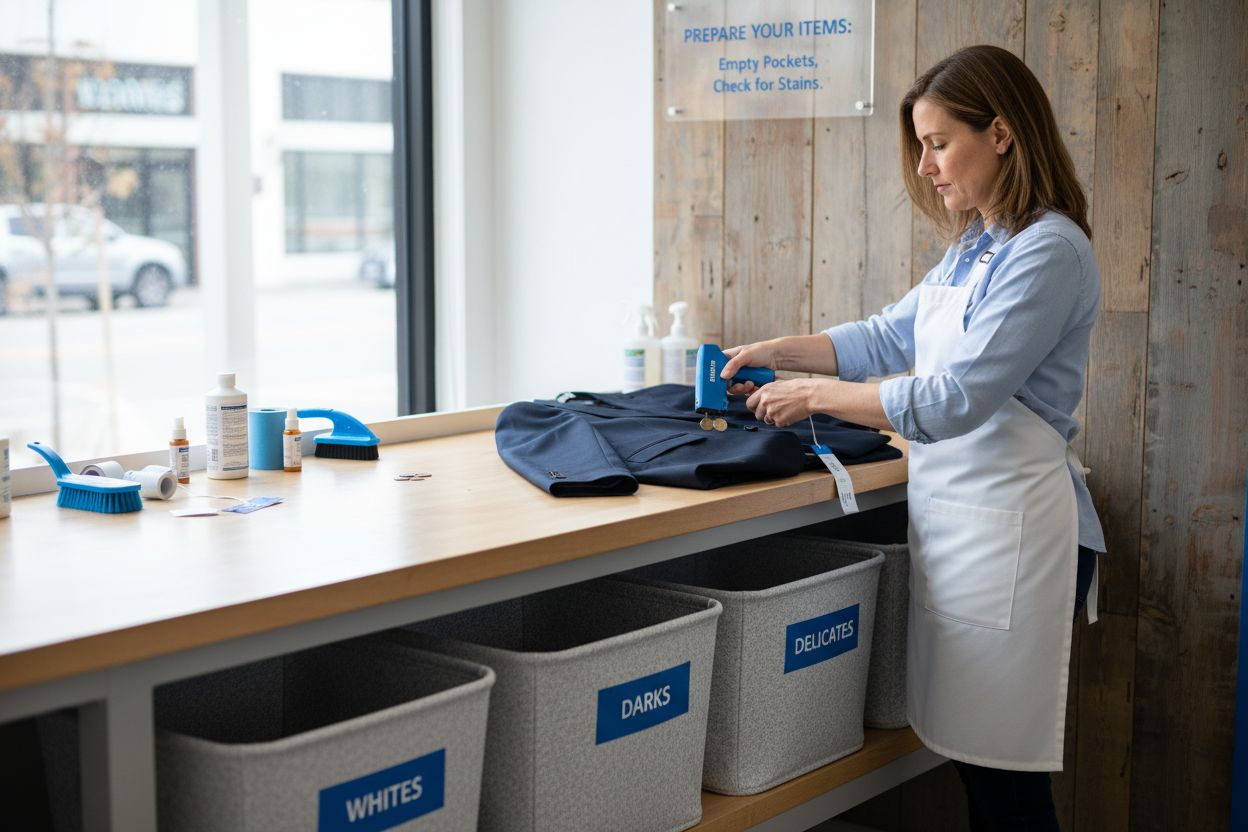
Step 4: Communicate Special Instructions to the Cleaner
Communicating with your professional dry cleaner is an art form that goes far beyond simply dropping off your garments. Clear, detailed communication transforms a standard cleaning service into a personalized fabric care experience. This step requires thoughtful articulation of your clothing’s unique requirements, history, and potential vulnerabilities.
Explore our professional dry cleaning services to understand the range of specialized care options available. Begin by providing a comprehensive overview of each garment’s background. Professional dry cleaners appreciate clients who share specific details about stain origins, previous cleaning attempts, and any sentimental or financial value attached to the item.
Textile preservation experts emphasize the importance of transparent communication to prevent potential fabric damage. When discussing your garments, be prepared to share precise information about recent stains, alterations, or damage. Explain the context of any marks or wear patterns, as this helps cleaners select the most appropriate cleaning technique.
Customize your instructions with specific preferences such as fragrance-free detergents, gentle handling for delicate embellishments, or special folding requirements. Some garments might need extra attention to preserve unique design elements like intricate beadwork, vintage buttons, or specialized fabric treatments. By articulating these details, you ensure your clothing receives individualized care that matches its specific needs.
Photographic documentation can be an invaluable communication tool. Take clear, well-lit images of any existing stains, fabric irregularities, or areas of concern before dropping off your items. These visual references provide dry cleaning professionals with immediate insight into the garment’s condition and potential cleaning challenges.
Address any time-sensitive requirements or upcoming events that might impact your cleaning timeline. If you need a garment prepared for a special occasion, communicate this clearly and confirm the cleaner can meet your deadline. Some professional services offer express cleaning options for urgent situations, but these typically require advance notification.
Don’t hesitate to ask questions or seek professional advice about fabric care. Experienced dry cleaners can offer valuable insights about fabric preservation, stain removal techniques, and long-term garment maintenance. A collaborative approach turns a simple transaction into a partnership focused on maintaining the quality and appearance of your clothing.
Finally, request a detailed receipt that documents the items you’ve dropped off, along with any specific instructions or agreements. This documentation serves as a reference point and provides accountability for both you and the dry cleaning service.
Step 5: Pick Up and Inspect Your Cleaned Items
The final stage of the professional dry cleaning process is arguably the most critical moment where preparation and communication converge into tangible results. Picking up and meticulously inspecting your cleaned items transforms the entire cleaning journey from transaction to quality assurance. This step is not merely about collecting your garments but ensuring they meet your exacting standards of care and presentation.
Discover expert fabric care techniques to understand the nuanced approaches professional cleaners employ. When you arrive to retrieve your items, request good lighting and a flat surface where you can conduct a comprehensive inspection. Professional dry cleaning services like Columbia Pike Laundry typically provide a dedicated inspection area for this precise purpose.
Professional textile experts recommend examining each garment immediately upon pickup. Begin with a visual sweep, checking for overall color consistency, fabric texture, and any signs of unexpected wear. Inspect buttons, zippers, and decorative elements to confirm they remain securely attached and undamaged. Pay close attention to previously identified stain areas, verifying that they have been successfully treated.
Unfold and carefully examine each item under good lighting. Look for subtle changes in fabric appearance, unexpected shine, or potential shrinkage. Professional dry cleaners use specialized techniques that should preserve your garment’s original shape and texture. If you notice any discrepancies, address them immediately with the staff before leaving the premises.
Check the functionality of all clothing components. Ensure zippers glide smoothly, buttons are securely fastened, and any intricate details remain intact. For suits and formal wear, verify that the structured elements like shoulder pads and lapels maintain their original shape. Delicate items such as evening gowns or vintage pieces require especially careful examination.
Maintain your cleaning receipt and request a detailed explanation of any treatments performed. Some professional dry cleaning services provide documentation outlining specific cleaning processes used for each garment. This paperwork can be valuable for future reference and understanding the care your clothing has received.
Should you discover any issues during inspection, communicate them immediately and professionally. Reputable dry cleaning services stand behind their work and will typically offer solutions such as re-cleaning, repair, or compensation for any damage. Your thorough inspection protects both your investment in clothing and ensures the highest standard of professional fabric care.
Below is a troubleshooting table that outlines common dry cleaning issues, their likely causes, and the recommended response based on guidance in the article.
Remember, the goal is not just clean clothing but clothing that looks and feels refreshed, maintaining its original quality and extending its wearable life. A careful, methodical pickup and inspection process is the final seal of approval in your professional dry cleaning experience.
Experience True Fabric Care Expertise With Columbia Pike Laundry
Tired of reading garment care labels and still feeling unsure about the best way to protect your favorite clothes? You have just explored tips on assessing labels, choosing services, preparing clothes, and getting a flawless dry cleaning result. But even with solid knowledge, the process can still feel overwhelming if you want your investment pieces to last.
Our family-owned team brings hands-on fabric expertise matched with modern convenience. Every step, from stain treatment to garment inspection, is handled in-house so nothing gets missed. Want to see more care tips and solutions tailored to your concerns? Visit Fabric Care Expertise | Laundry Tips and discover practical help for lasting garment life.

Ready for professional results without the hassle? Columbia Pike Laundry makes it effortless with transparent pricing, pickup and delivery, and a seamless online platform for all your preferences. Ensure your clothes are cleaned and preserved by true experts who are invested in your satisfaction. Take the next step for your wardrobe by booking a service at Columbia Pike Laundry today. Spots fill quickly during peak seasons, so act now to experience caring, reliable dry cleaning you can trust.
Frequently Asked Questions
What should I look for on my garment’s care label?
Care labels are essential for understanding the specific cleaning instructions for your fabrics. Look for symbols indicating whether professional dry cleaning is required, and any special instructions related to bleaching or drying.
How can I prepare my items for dry cleaning effectively?
To prepare your items for professional dry cleaning, inspect each garment for damages, empty all pockets, and identify any visible stains. Organize your items by color and fabric type to assist your cleaner in the process.
What types of dry cleaning services should I consider for delicate fabrics?
When dealing with delicate fabrics, select a dry cleaning service that specializes in custom cleaning protocols. Ensure they are experienced with materials like silk, wool, or vintage clothing to maintain the integrity of these garments.
How can I communicate special instructions to my dry cleaner?
Provide your dry cleaner with detailed information about each garment, including any stains, previous treatments, and specific care preferences. This helps them customize their cleaning approach and increase the chances of successful stain removal.
What should I do when I pick up my cleaned items?
Upon picking up your cleaned items, inspect each garment thoroughly for any signs of damage or untreated stains. Address any concerns with the dry cleaning staff before leaving to ensure you are satisfied with the results.
How often should I dry clean my garments?
The frequency of dry cleaning depends on the fabric and the item’s wear. For delicate items, consider dry cleaning them every few months or only when necessary, while more durable fabrics may require cleaning after several wears.
Recommended
- Dry Cleaners Remove Stains Effectively
- How Dry Cleaning Works Explained Simply
- Caring for High-Performance Fabrics with Dry Cleaning
- How to Clean White Dress Shirt & Keep Bright
- What is Specialist Cleaning? Understanding Its Importance | Rozie - Malta's Best Cleaning Services
Popular Blog Articles

Meet the Author
Daniel Logan didn’t start CPL because he loved laundry. He started it because his family was drowning in time debt, and laundry was one of the biggest weights.
Mornings were chaos with two kids under 5. Evenings felt like catch-up. And weekends? Gone to sorting socks and folding piles.
He knew his story wasn’t unique. So he built a business that gave families like his just a little bit of breathing room one load at a time.
With no laundry experience but deep tech skills, Daniel rolled up his sleeves, doing every job himself while building systems that turned it into a modern laundry service that saves customers time, simplifies their lives, and delivers reliability they can count on.
That’s where CPL began. Not from a playbook, but from pain. From one dad trying to buy back time: for himself, and for every household like his.


